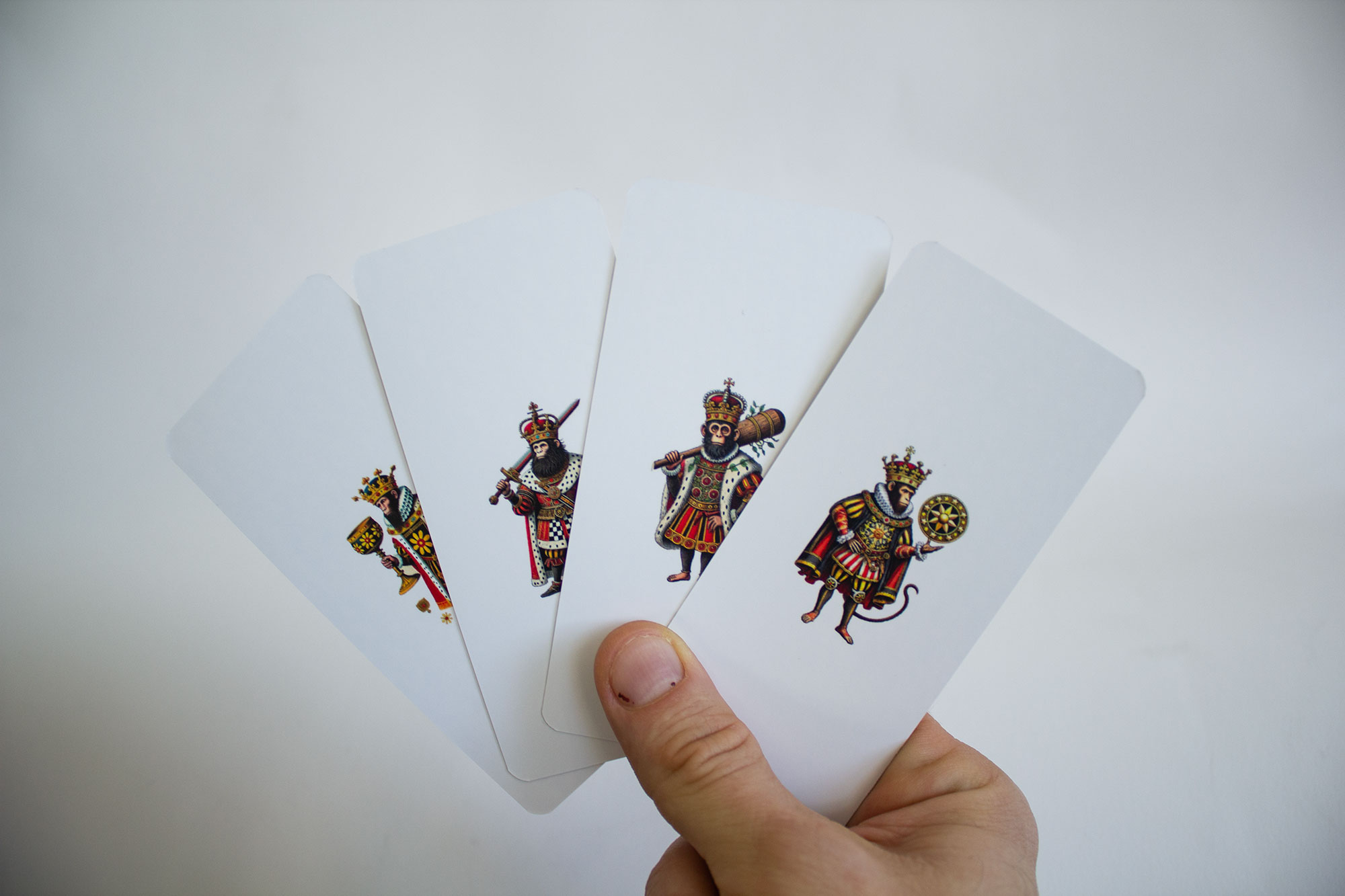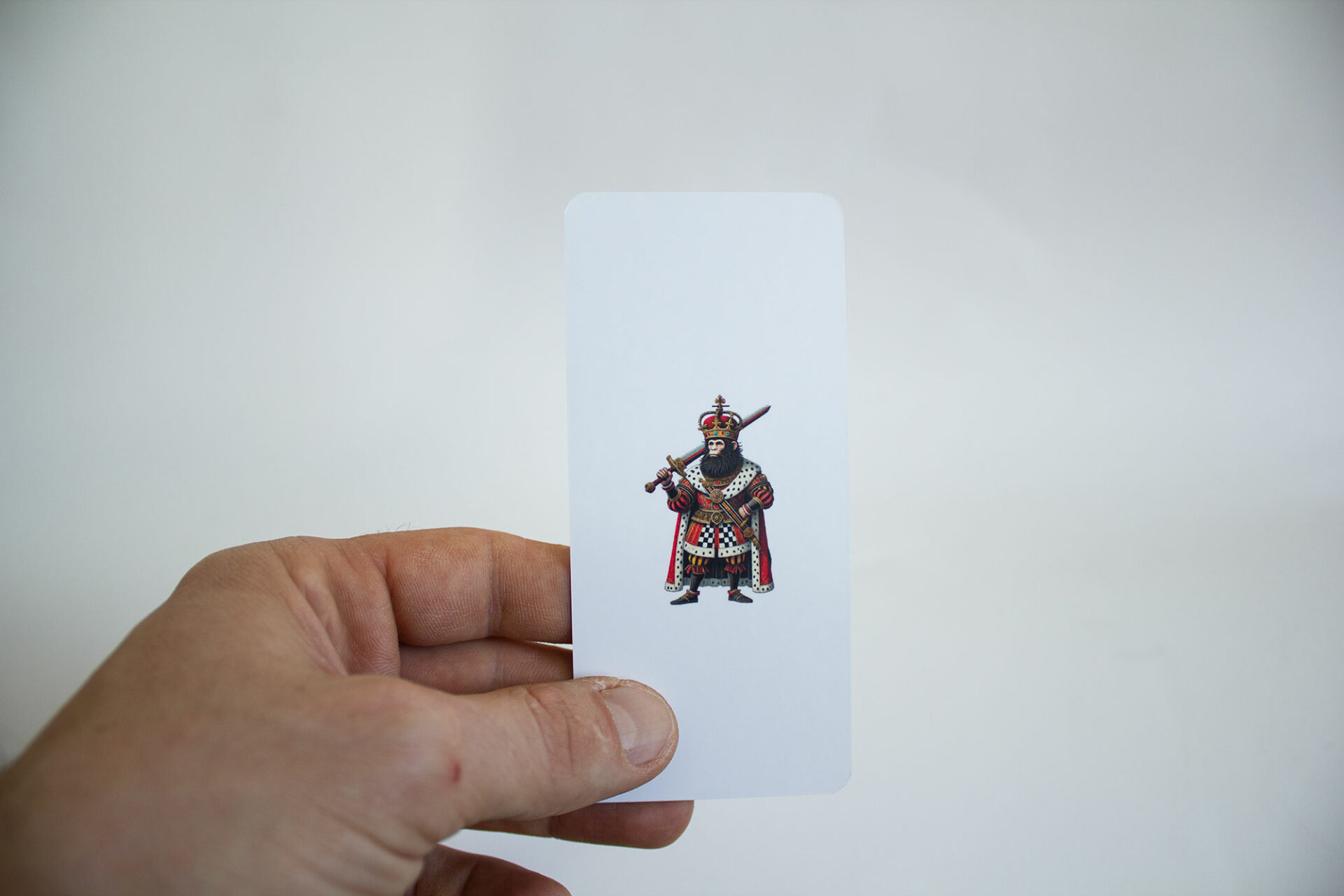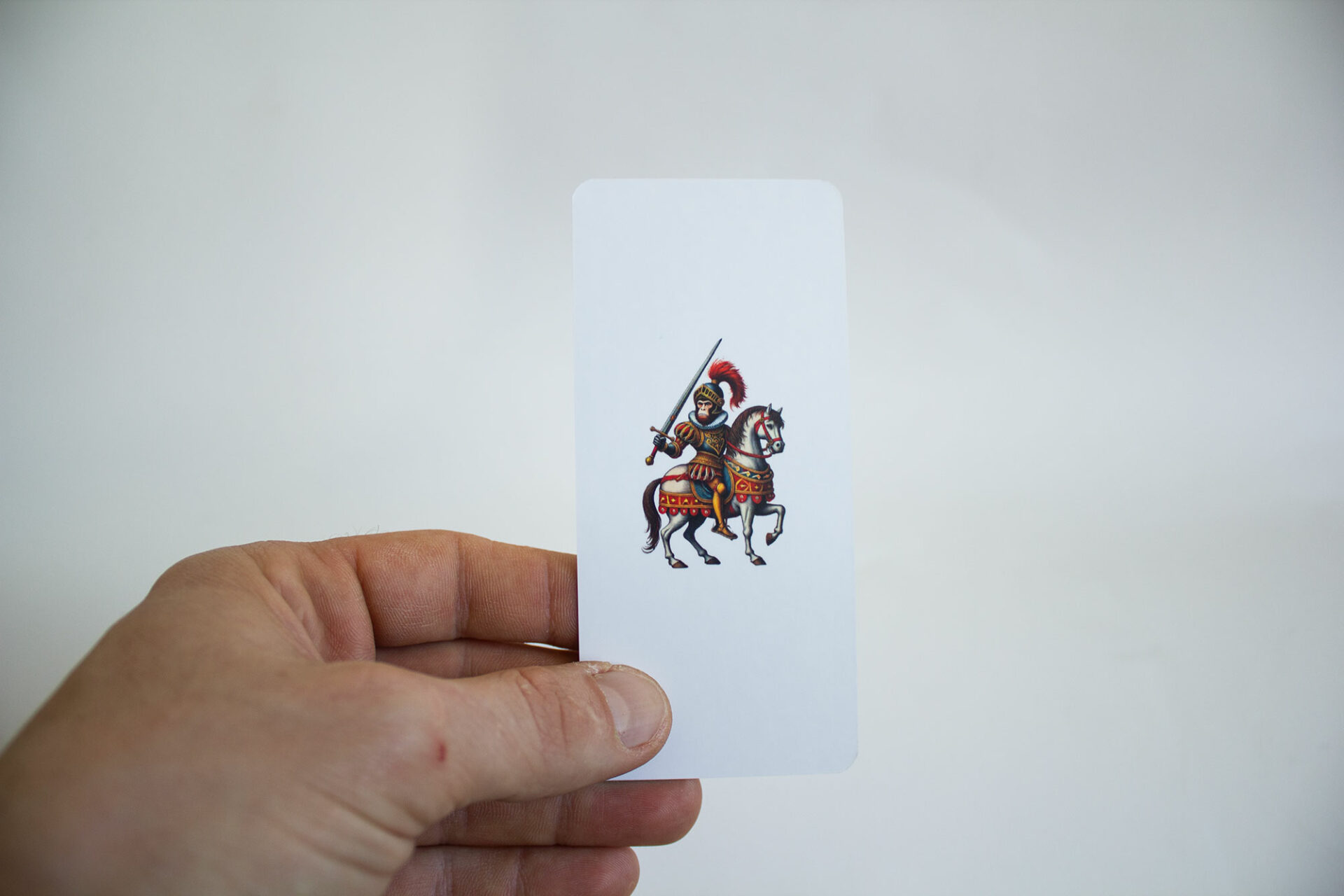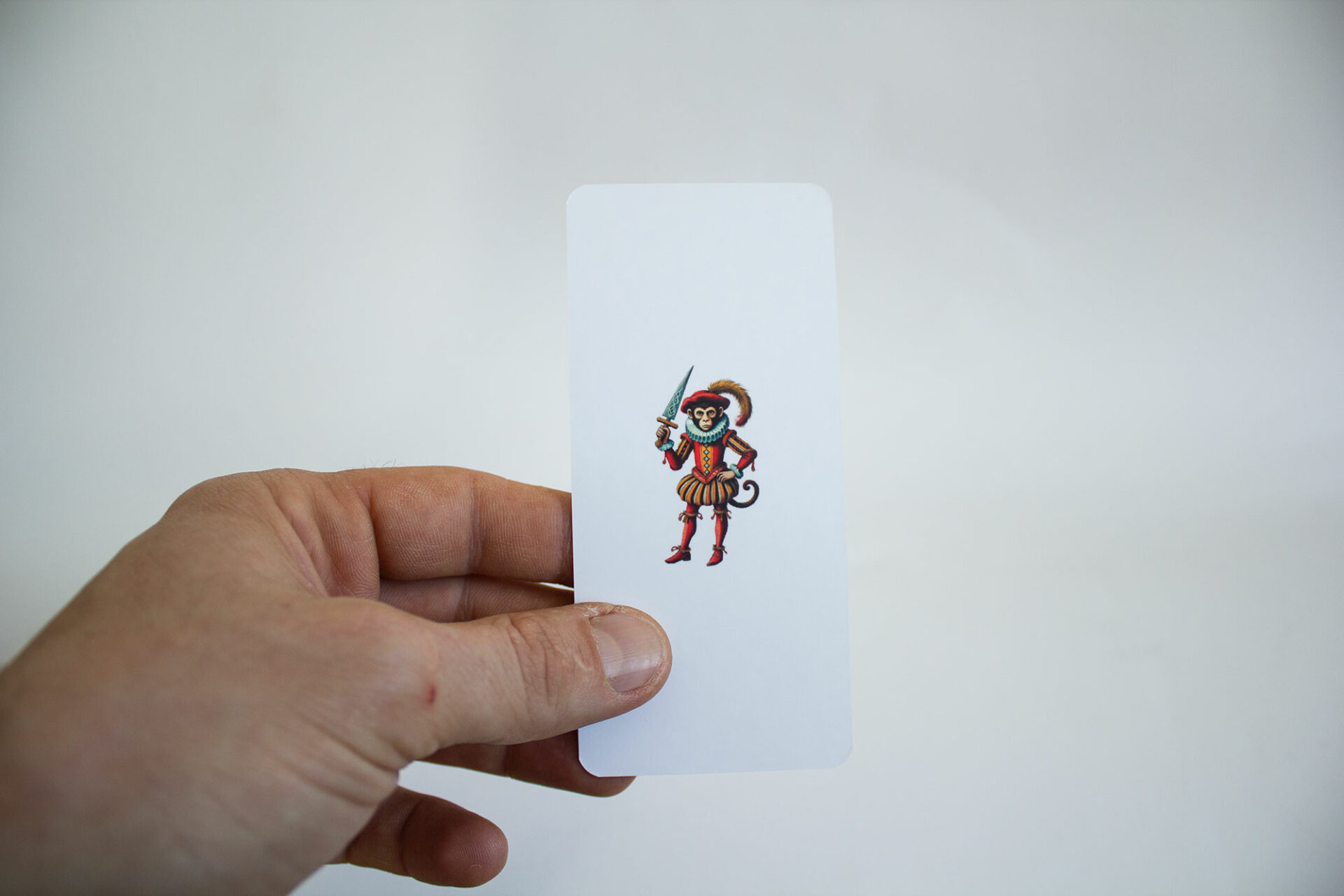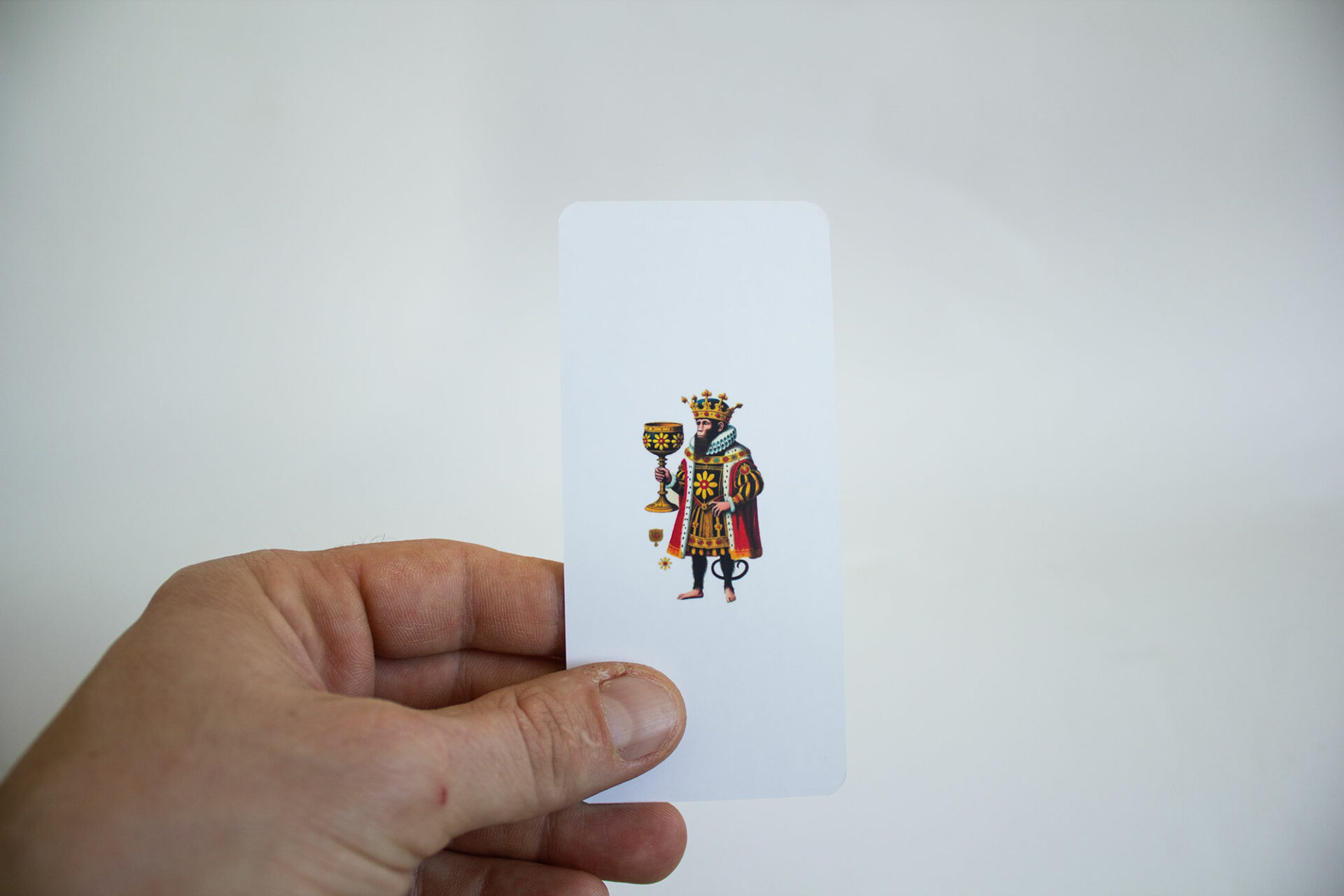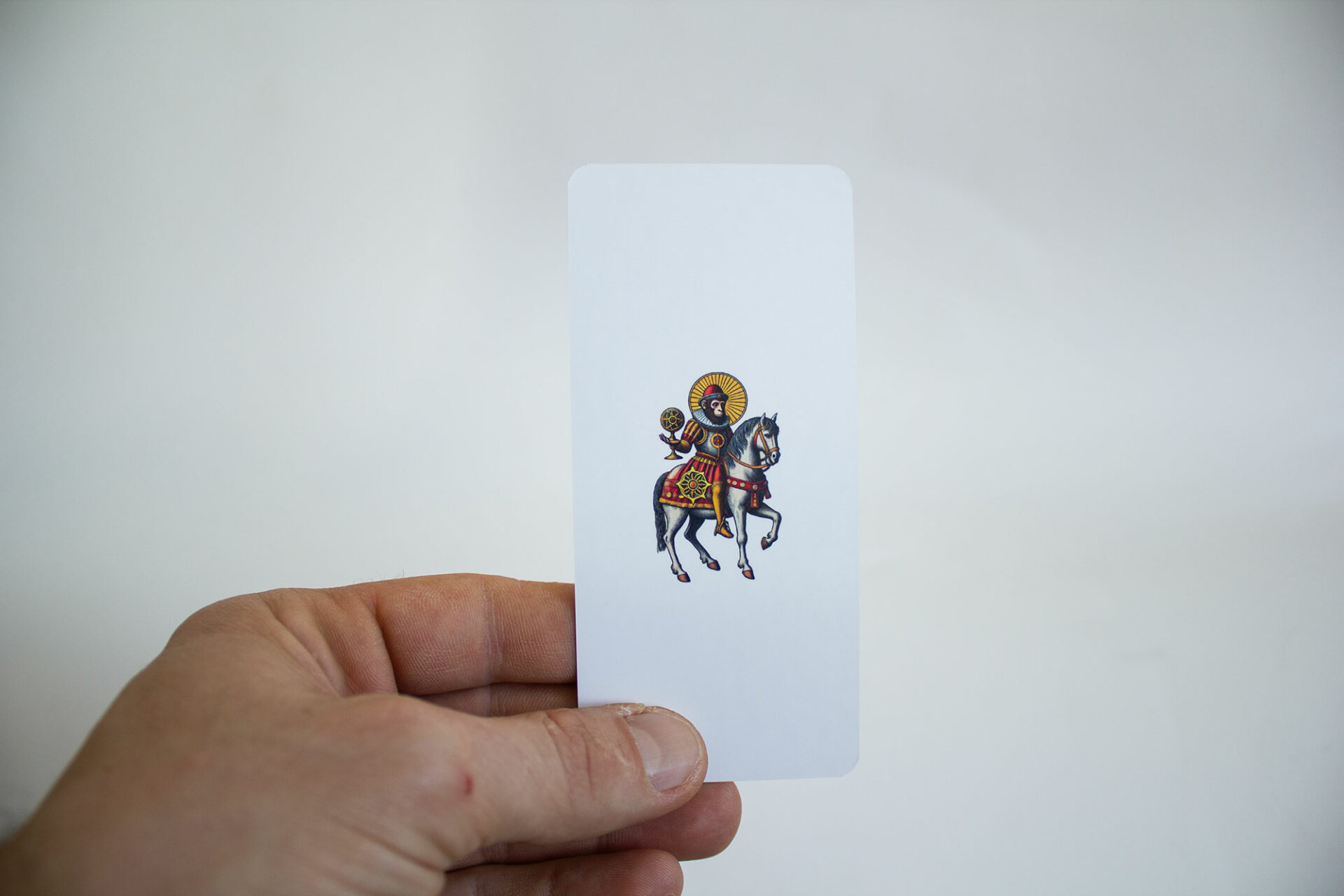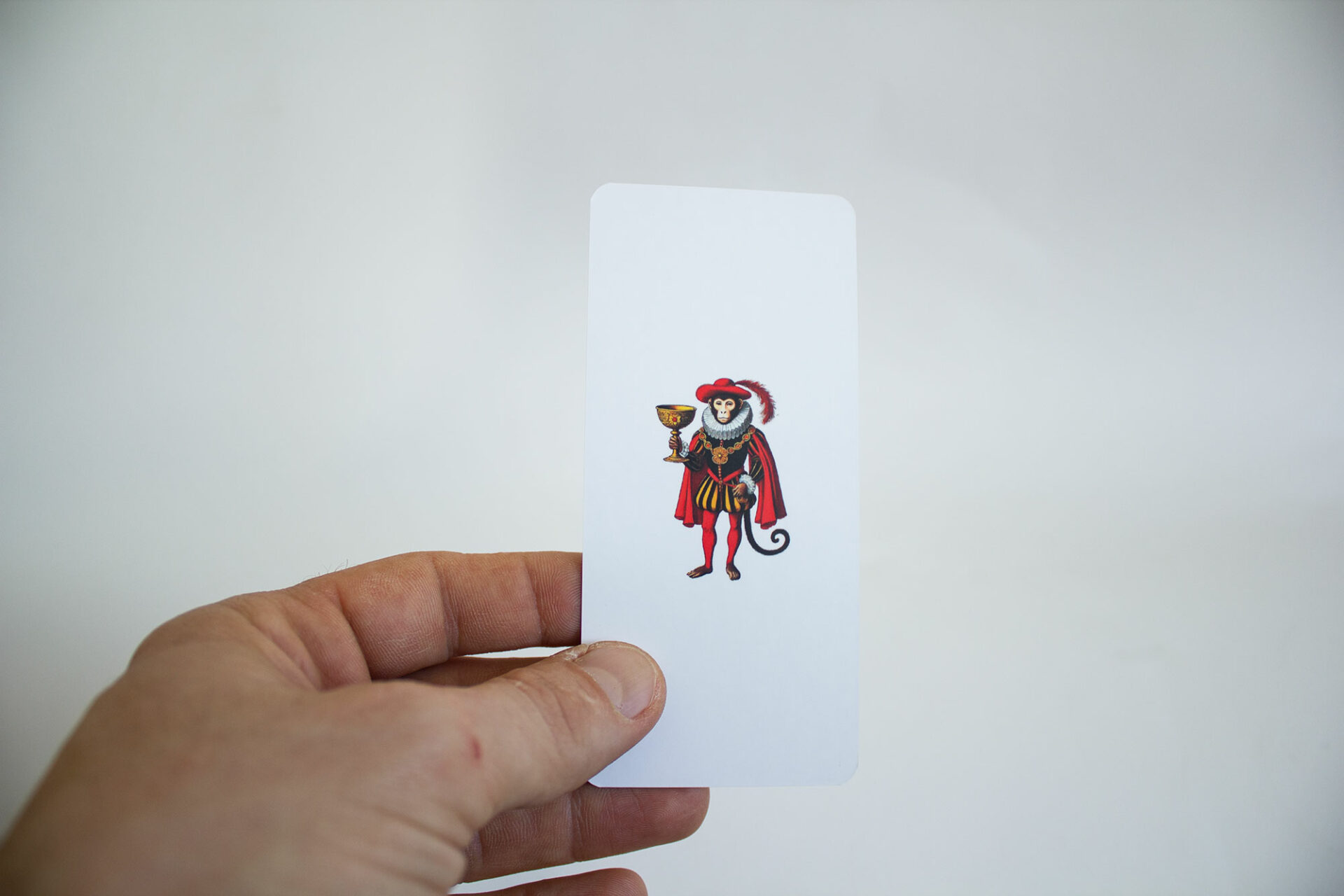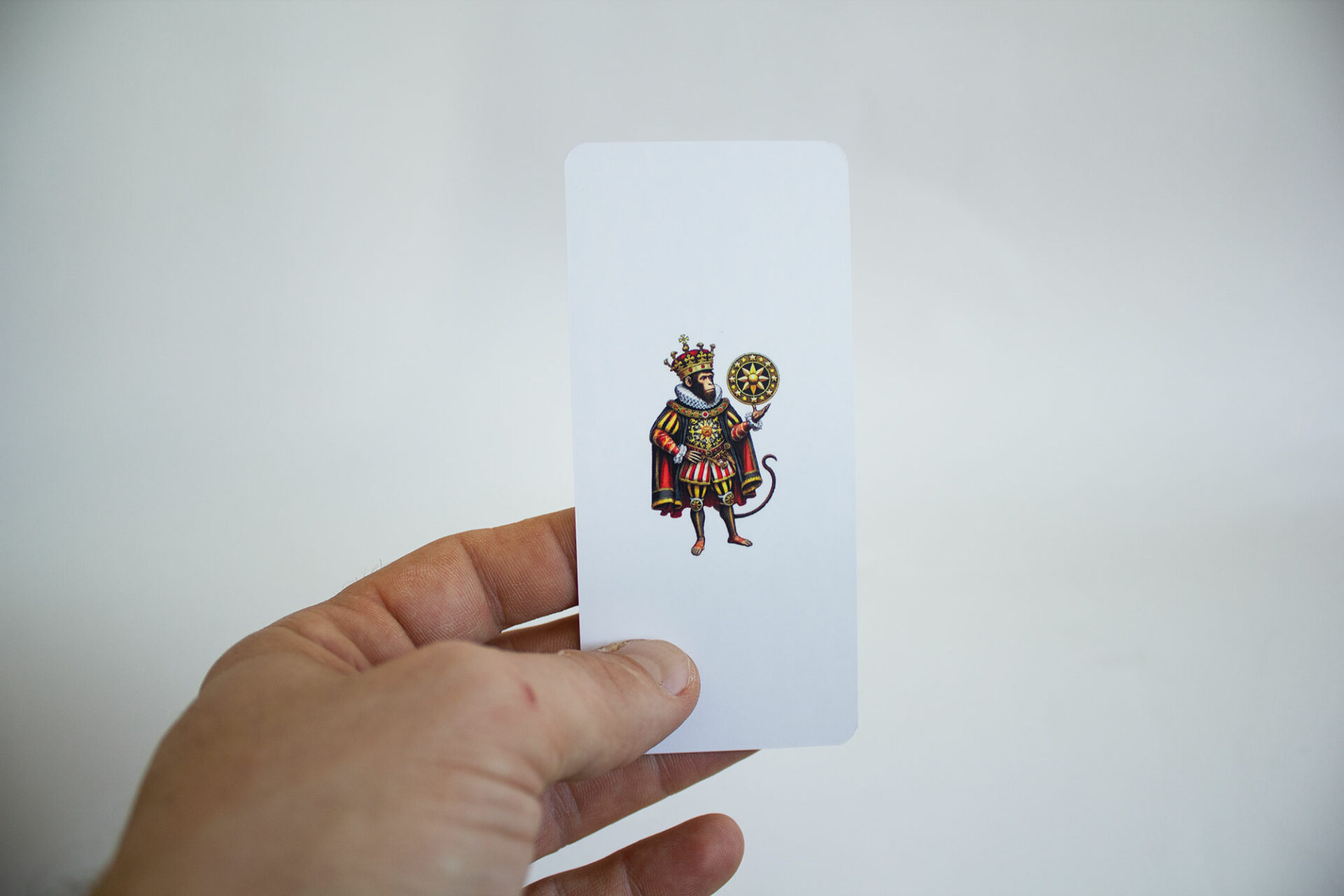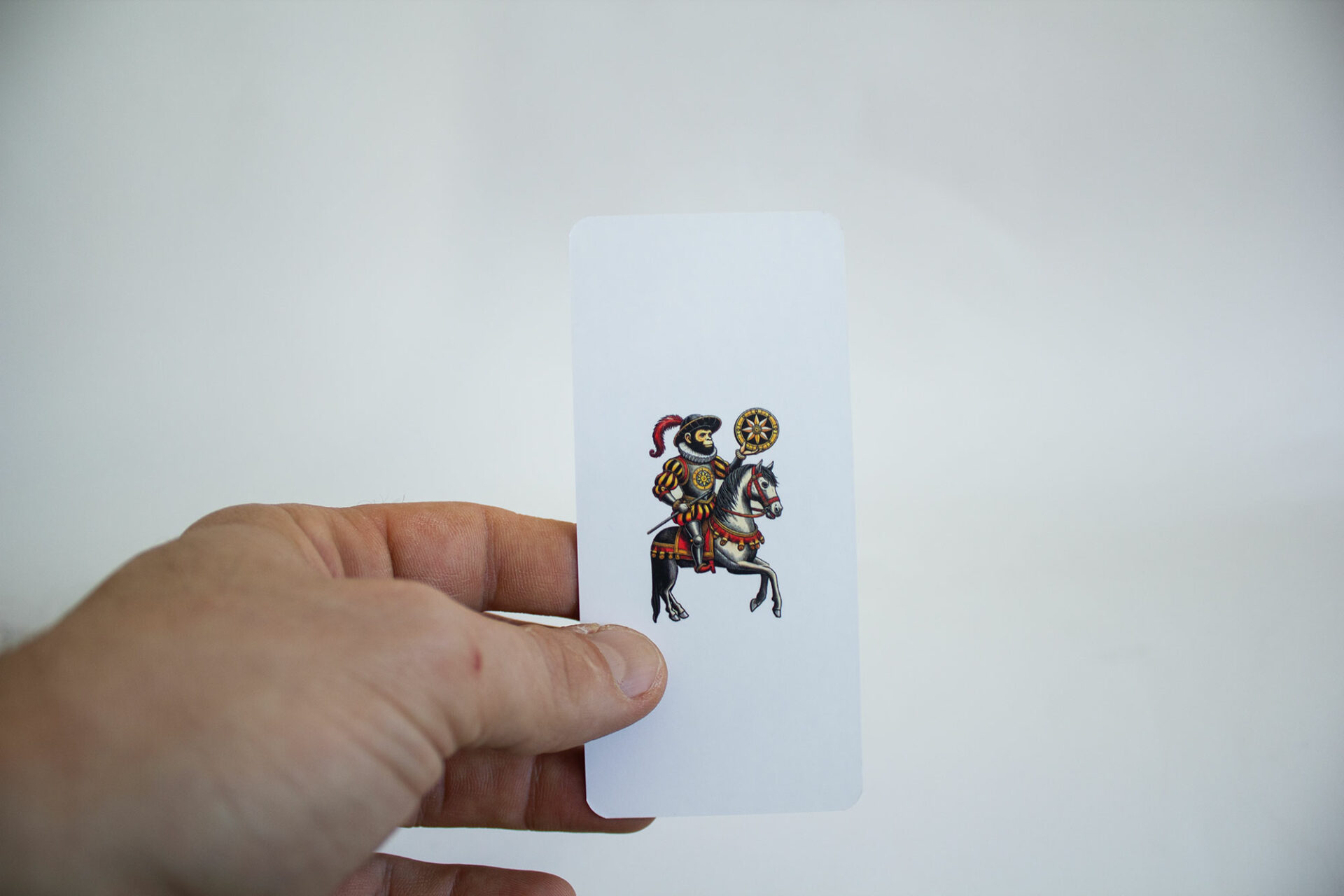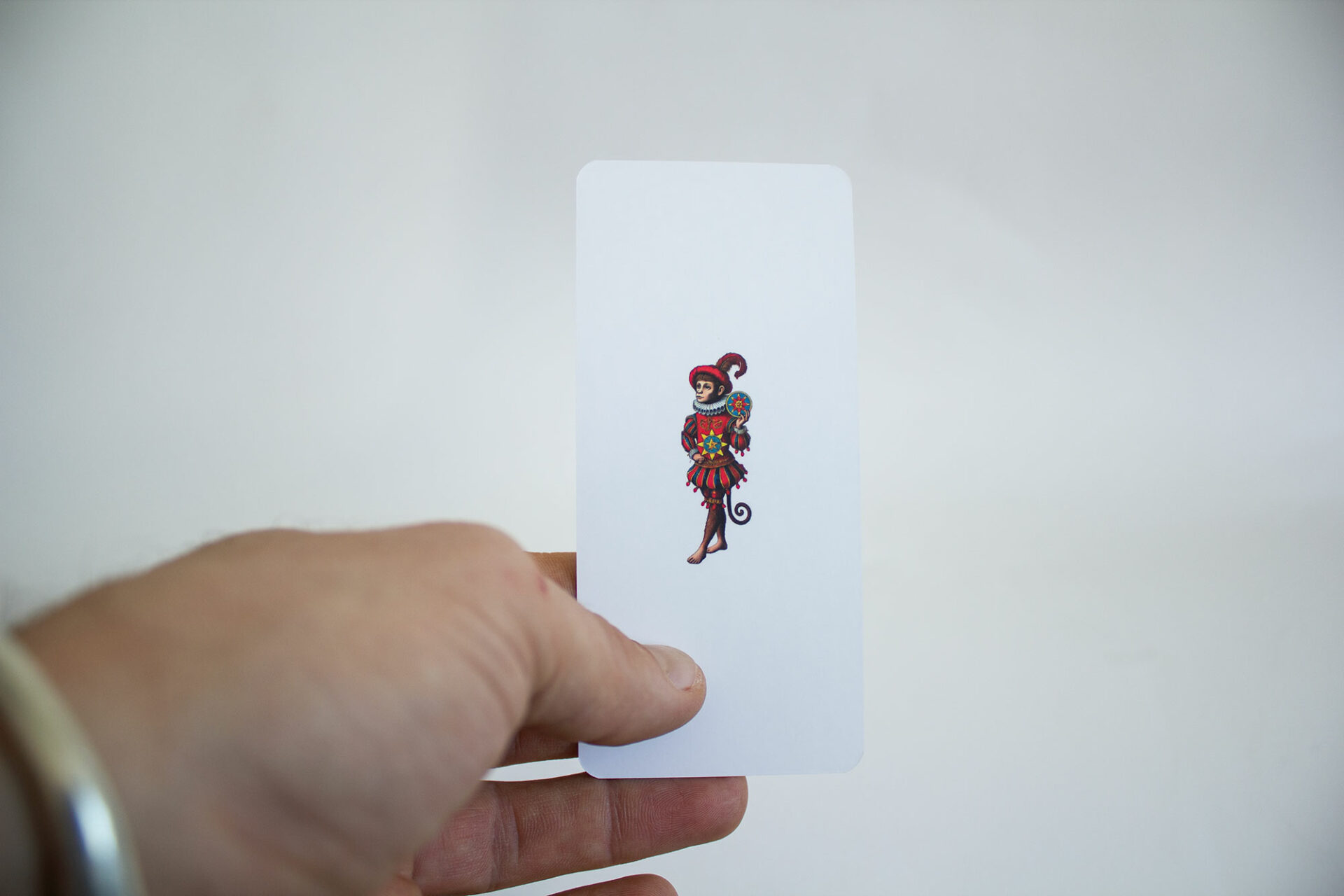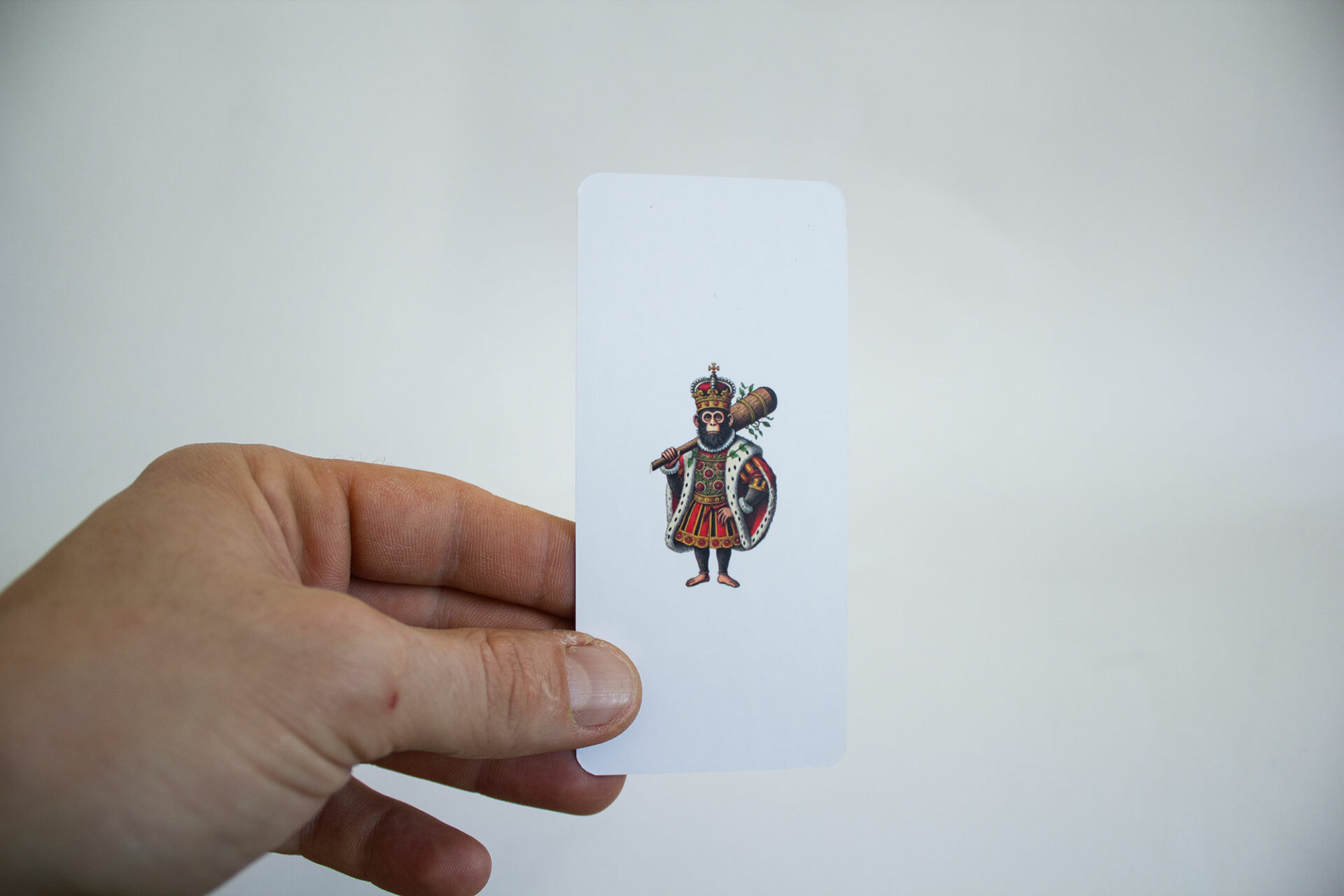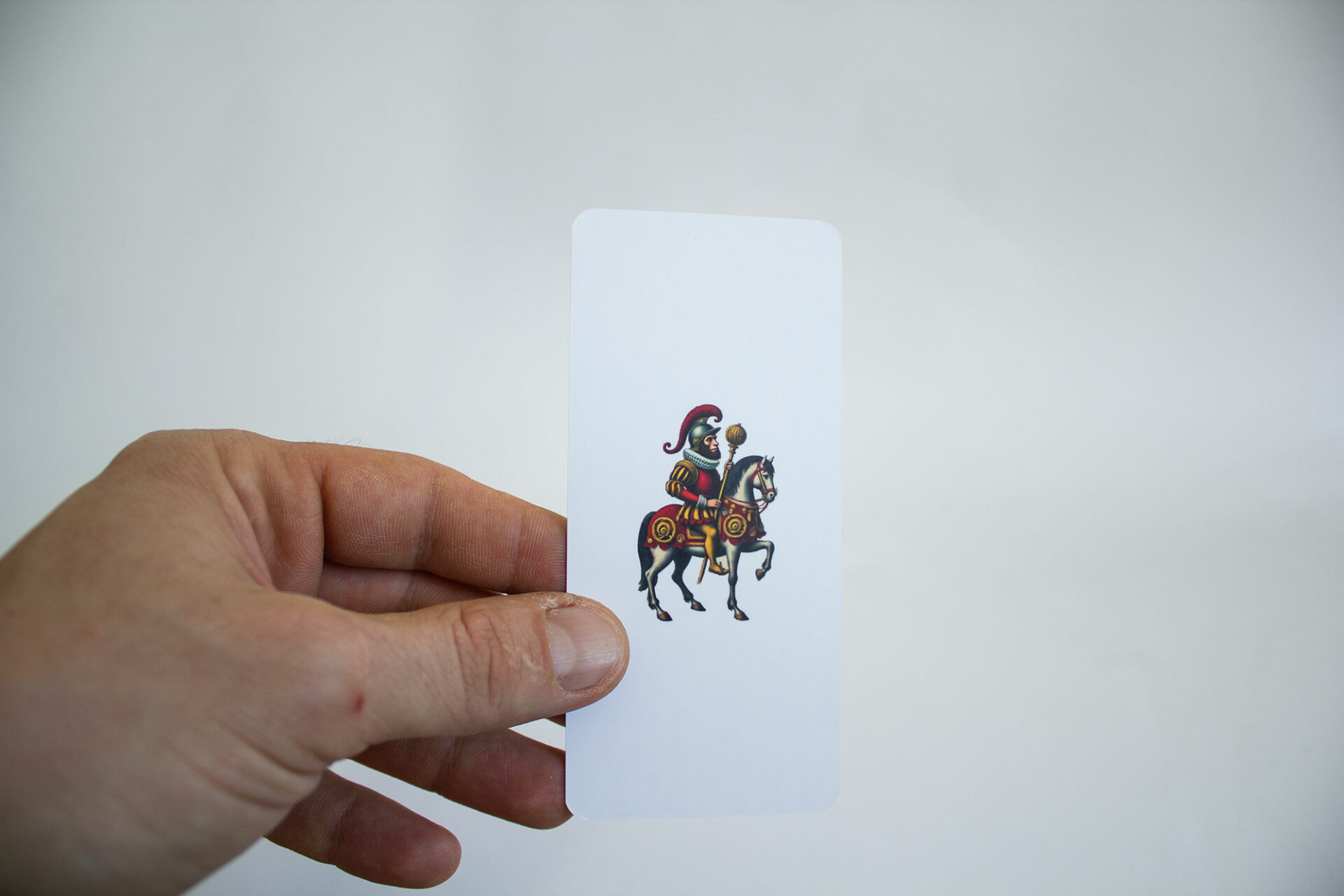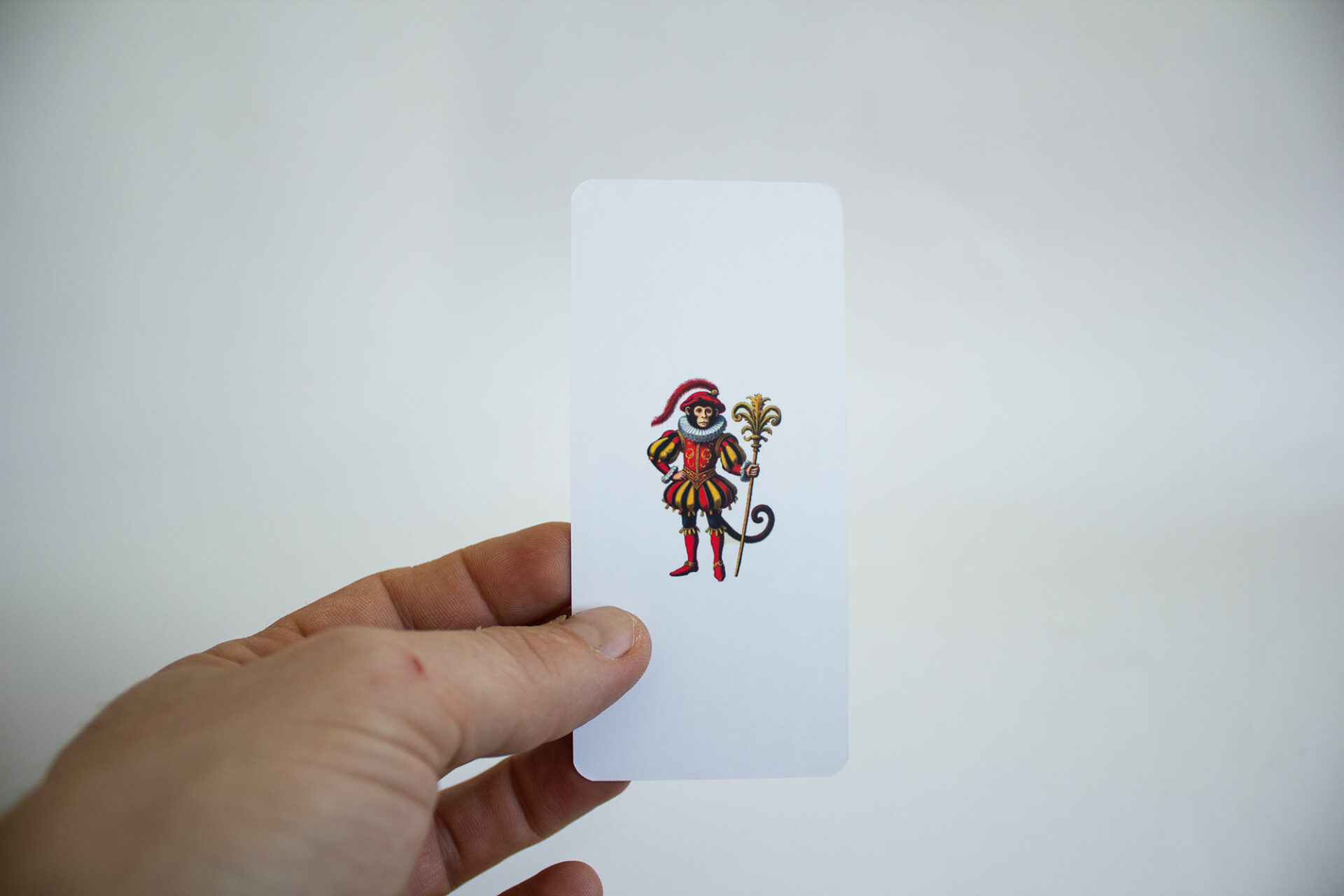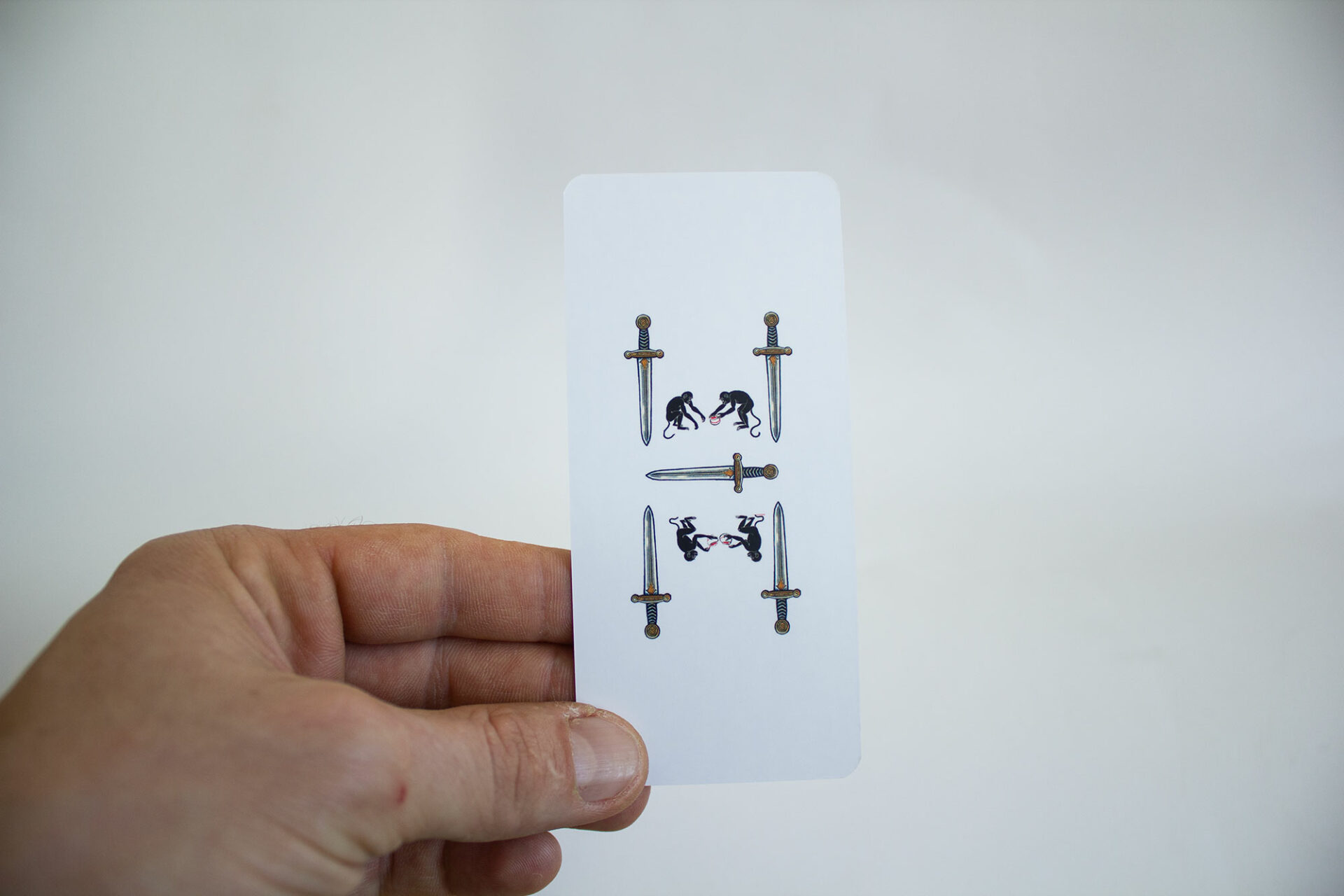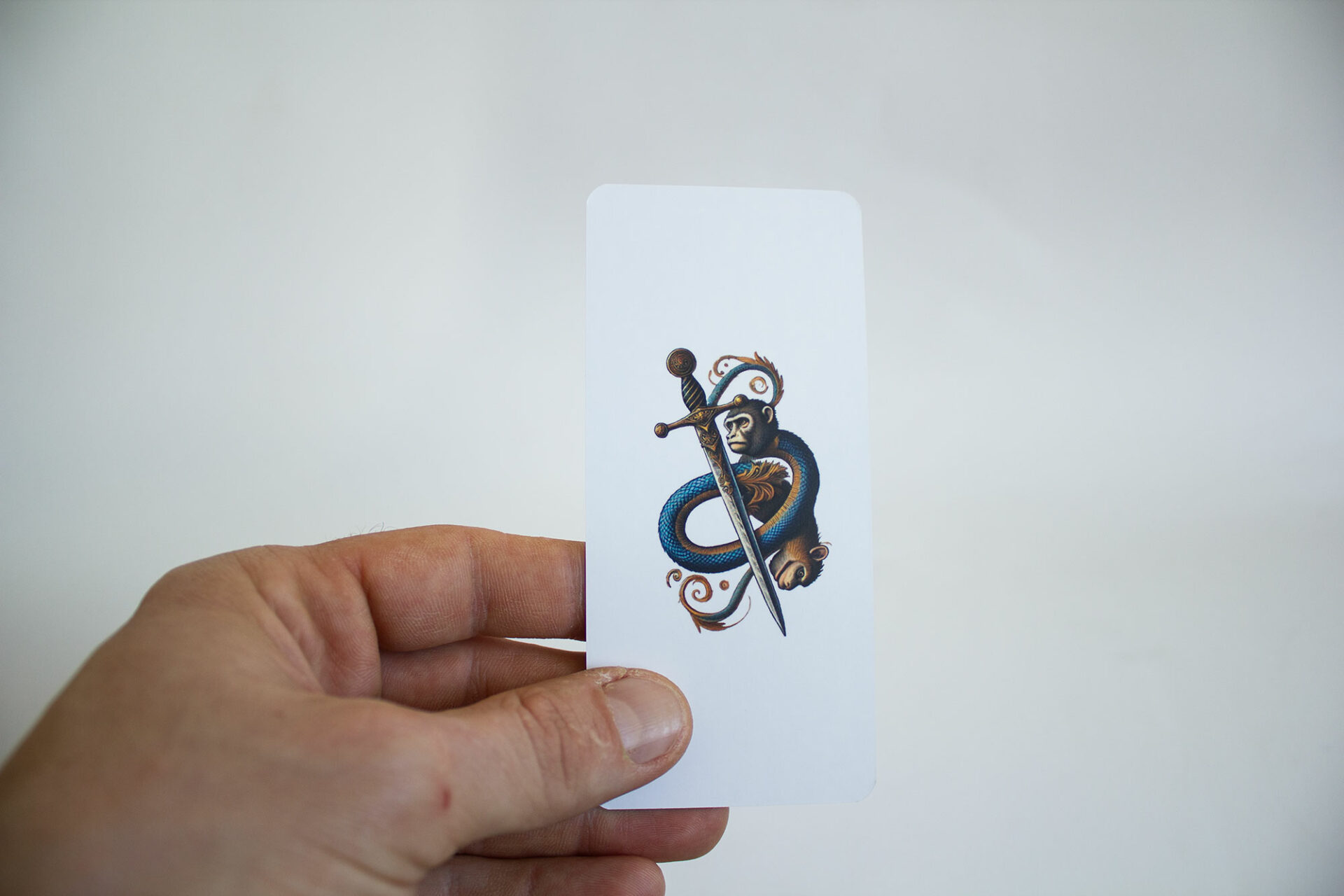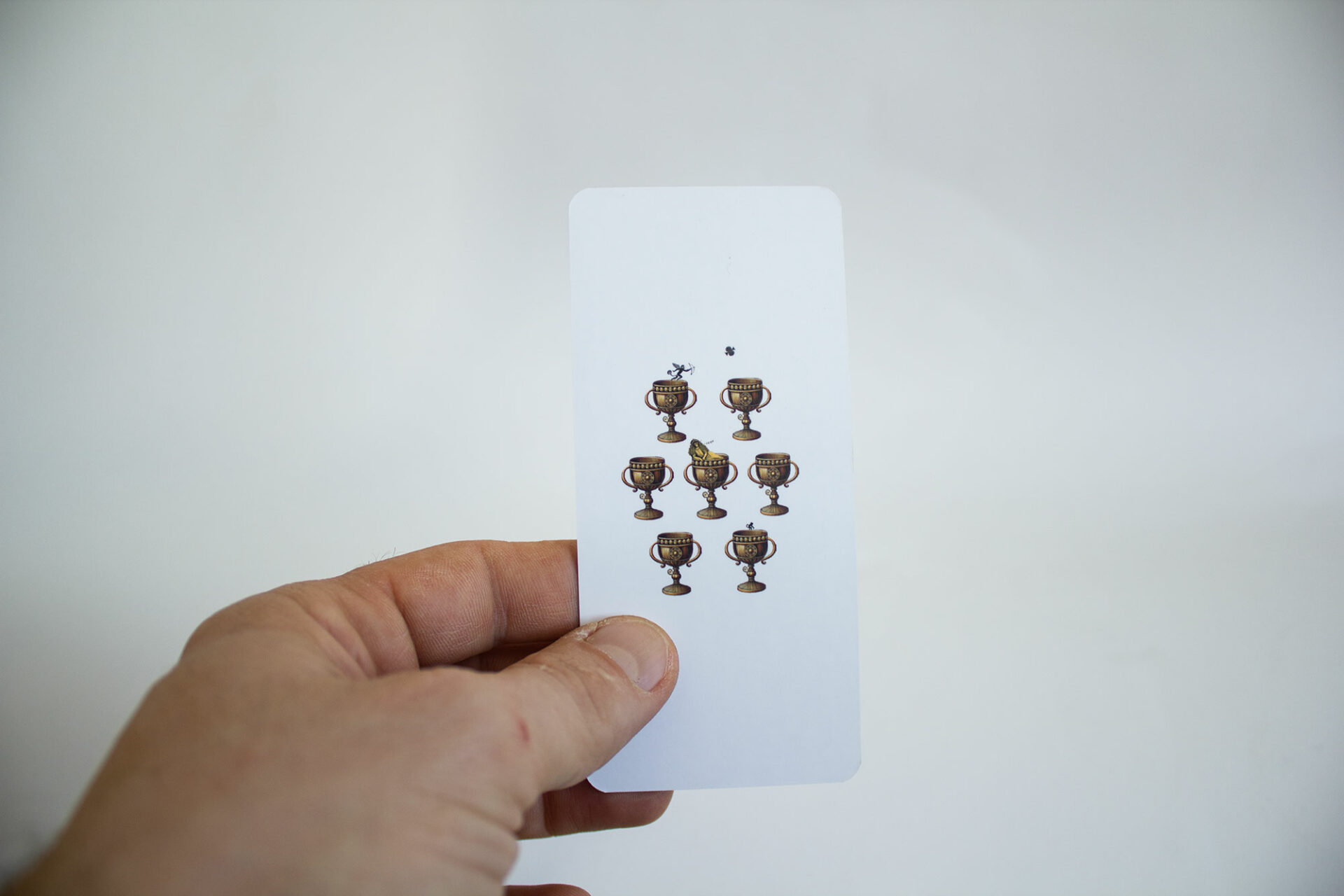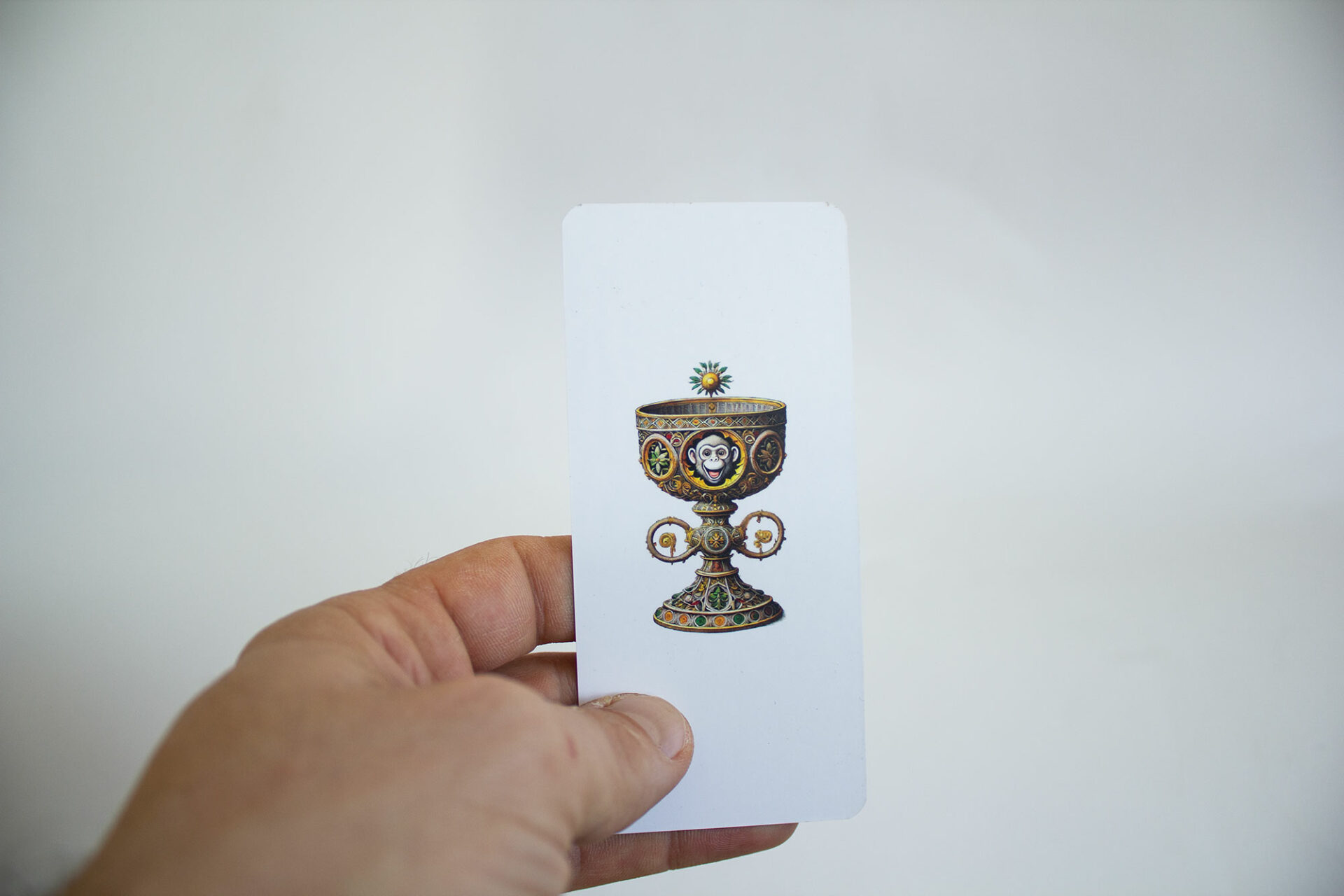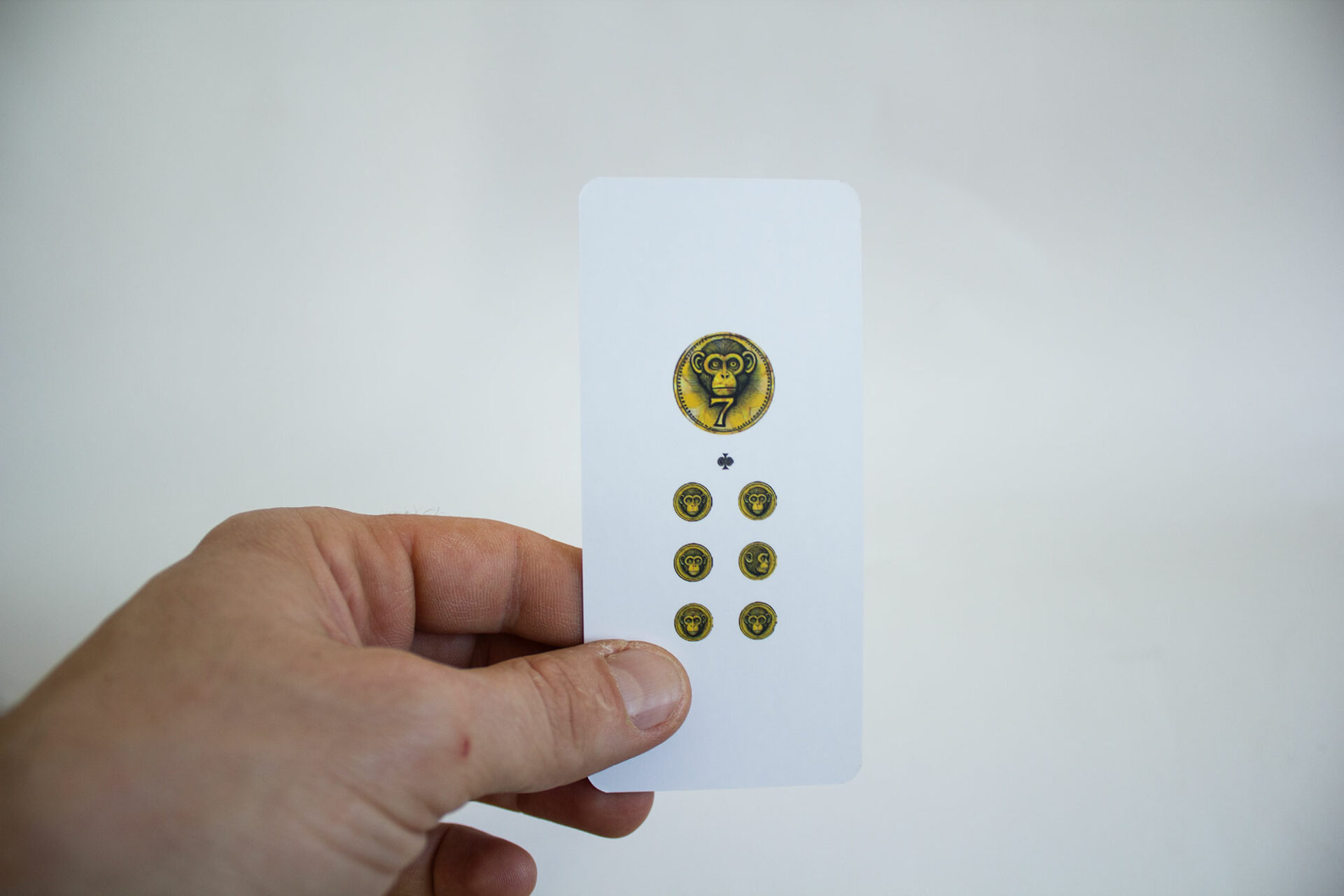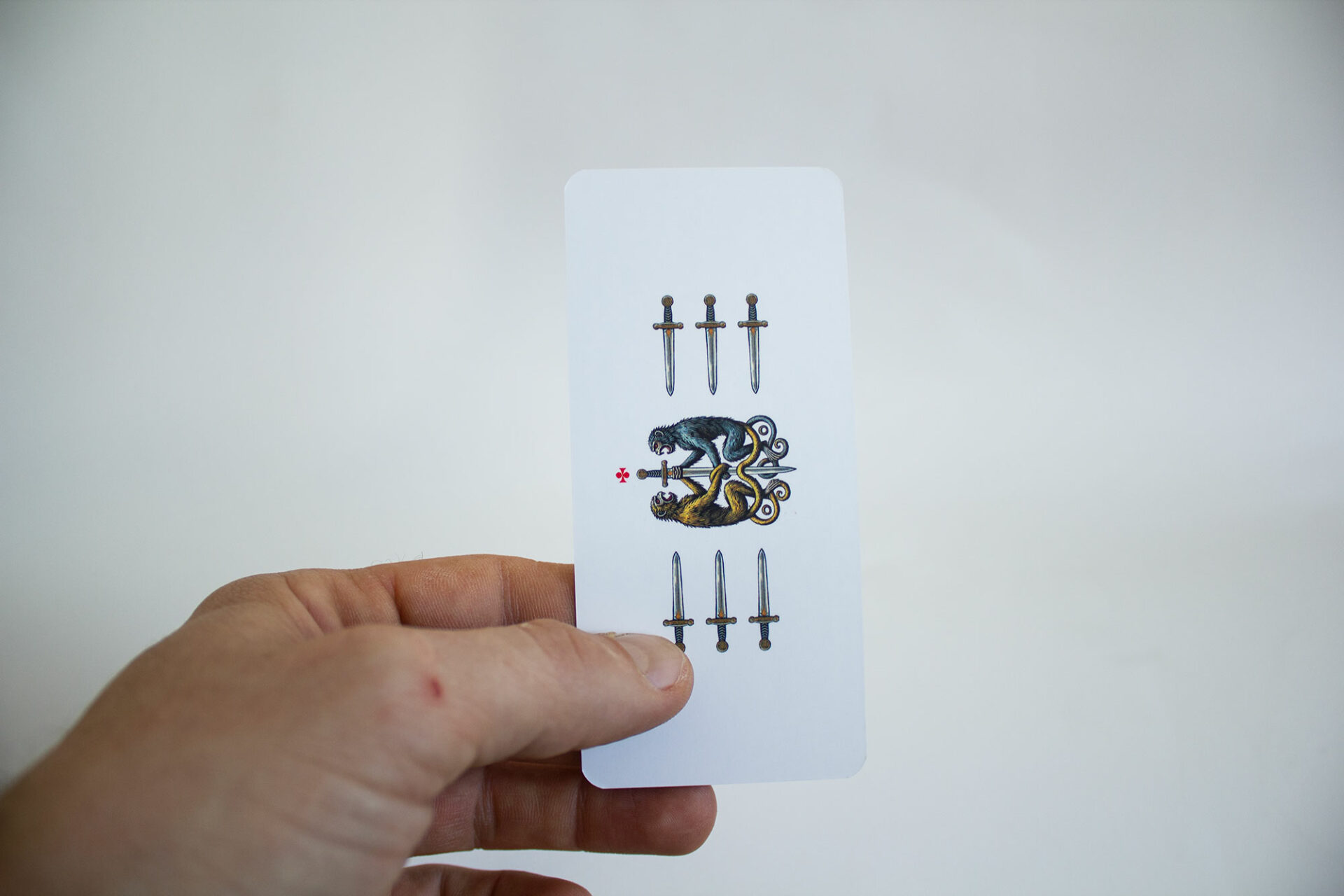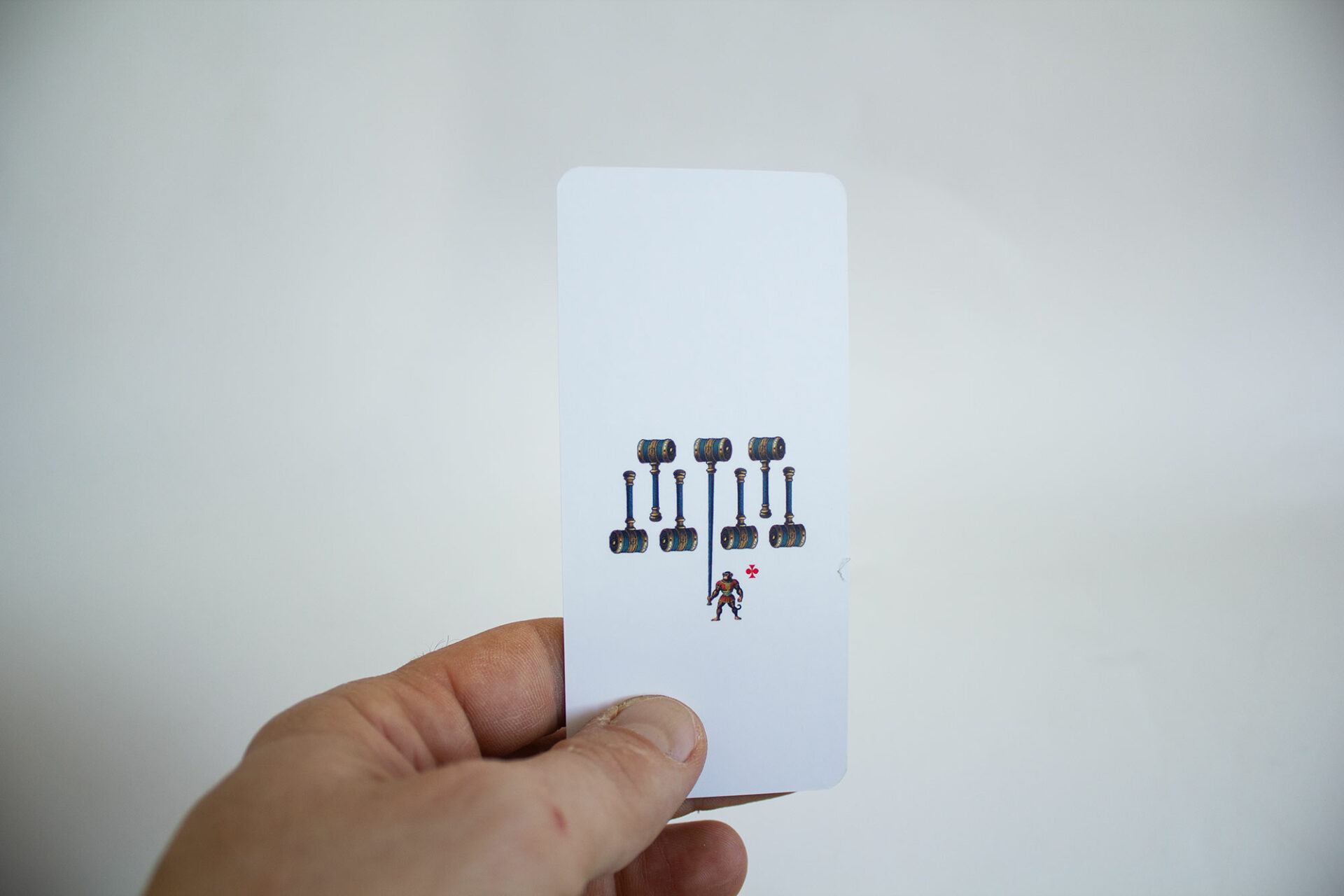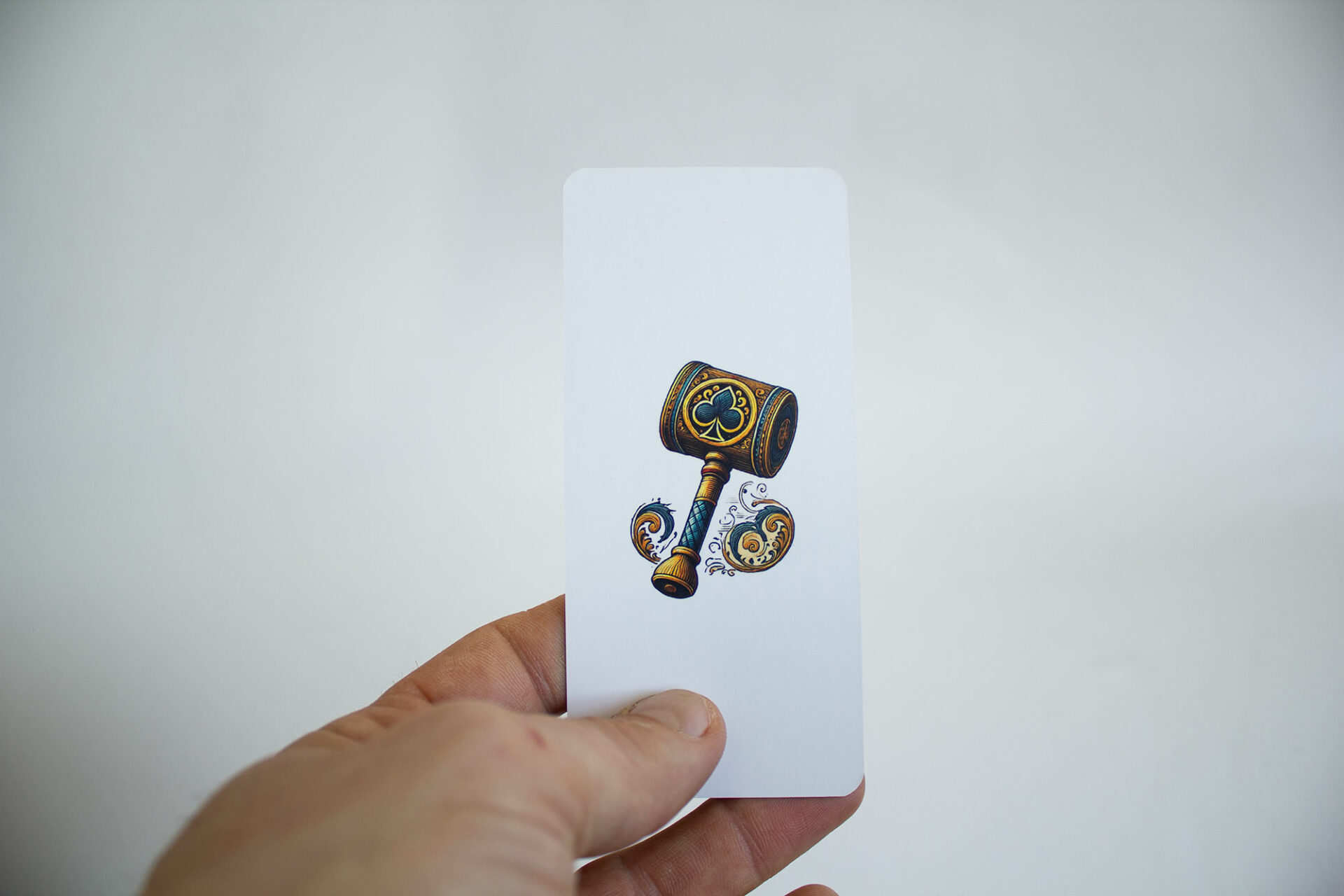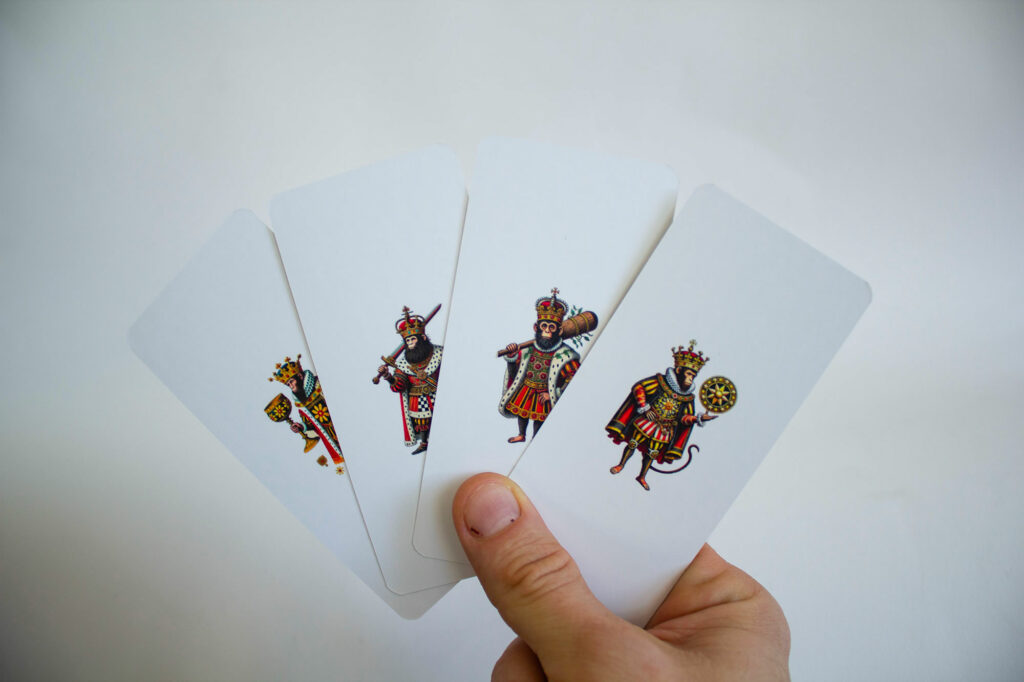
The origin of playing cards is mysterious, but they likely arrived in Europe from China in the late 14th century, quickly gaining popularity in aristocratic circles across France and Italy. Among the oldest decks is the Italian set, which evolved into the Neapolitan deck—40 cards divided into four suits: Swords (Spade), Cups (Coppe), Coins (Denari), and Clubs (Bastoni). These suits carried symbolic weight, representing different social classes: Swords symbolized the nobility, Cups the clergy, Coins the merchants, and Clubs the peasants.
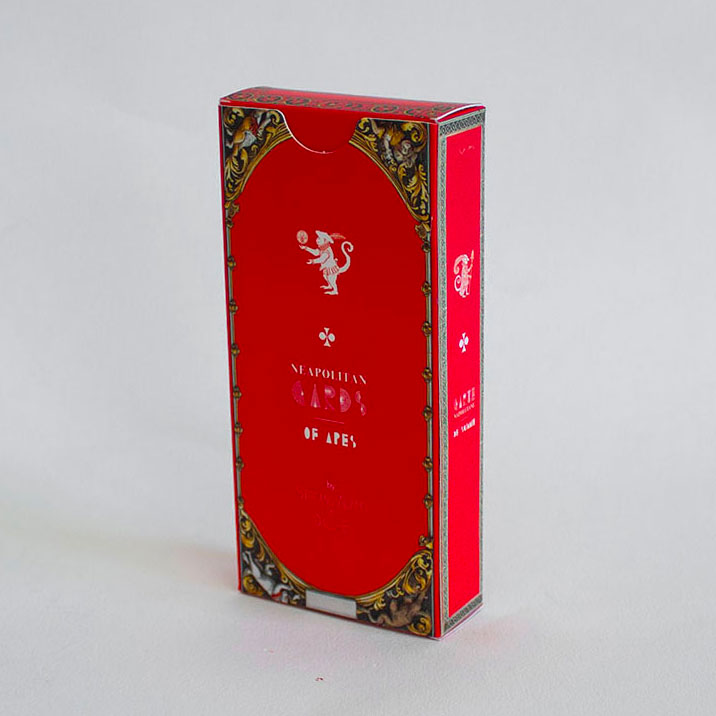
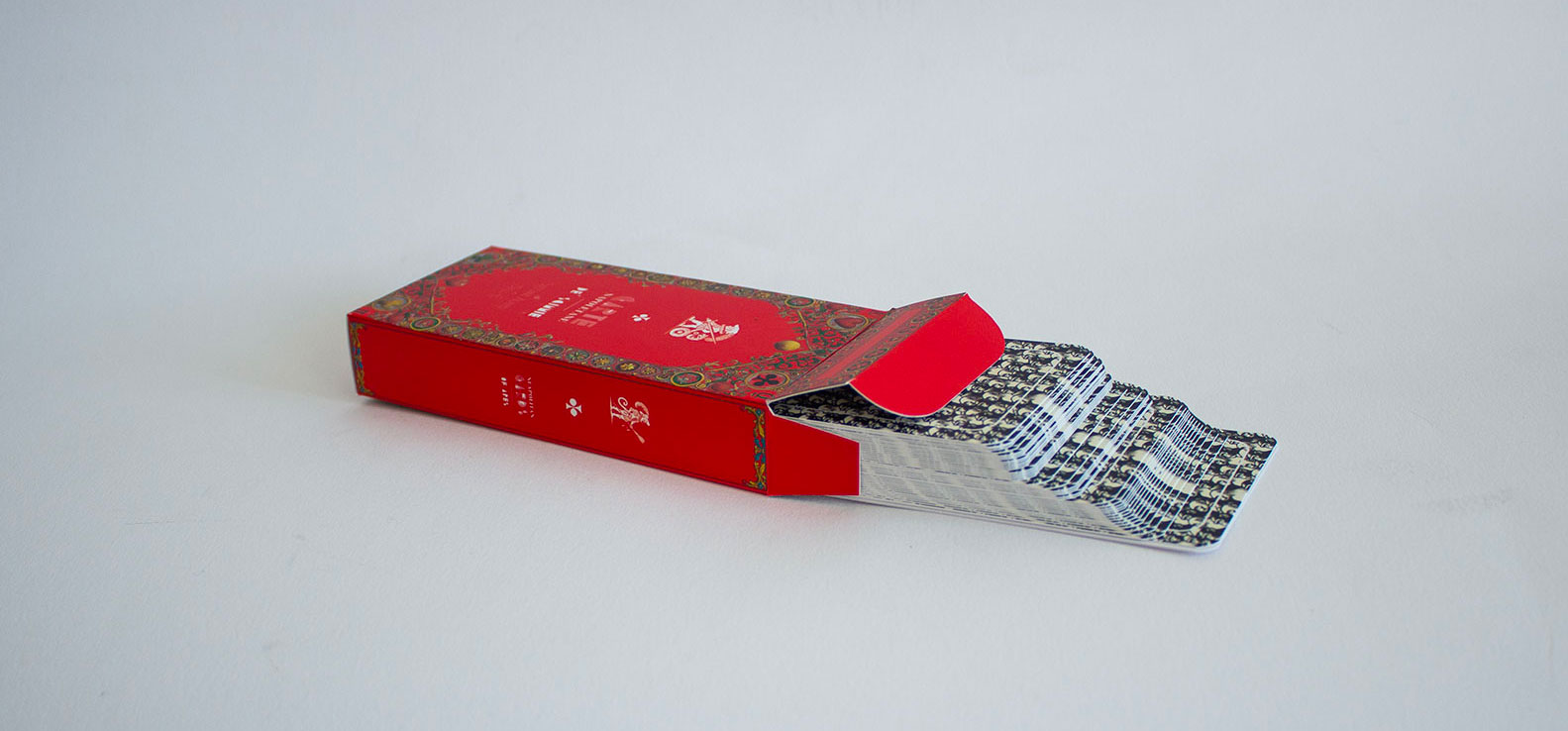
The Neapolitan deck, smaller than the standard 52-card deck, has maintained its unique style over centuries. Its simplicity and rich history make it ideal for traditional Italian games like Scopa and Briscola. These games require both strategy and luck, offering a dynamic experience deeply rooted in Italian culture.
In this version of the Neapolitan deck that I’ve created, I’ve preserved the classic structure while introducing a playful twist. The court cards—King, Queen, Knight, and Page—have been reimagined with monkeys instead of human figures, blending tradition with a touch of whimsy. This choice reflects the idea that, despite the structured hierarchies of the past, we remain playful beings, connected to our primal instincts.
Typography and compositions are by Stefano Alaimo, while the card illustrations are recompositions of fragments of images generated by Artificial Intelligence.
